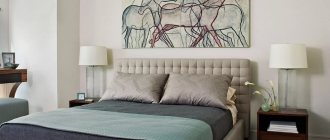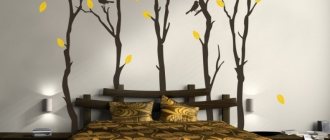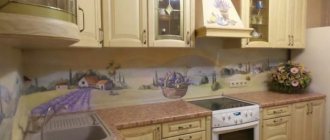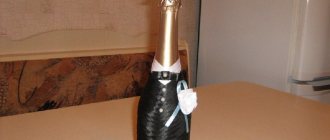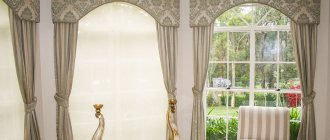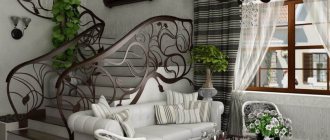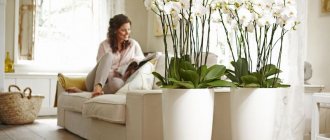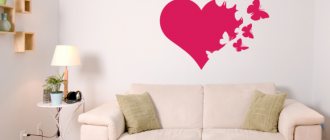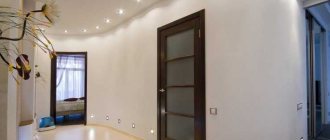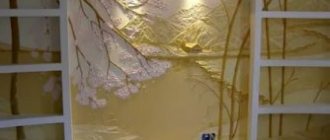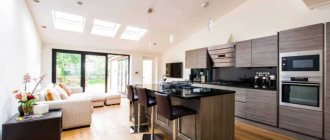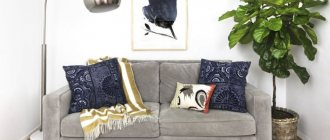Design techniques
The wall performs several functions at once. By attaching shelves to it, you can get a place to store various items, and by decorating the surface, you will make the design of the room unique.
The answer to the question of what you can use to decorate the walls is quite simple. The working surface is painted using airbrushing. The paint is sprayed using a special device (airbrush). The general background is left monochromatic or decorated with smooth color transitions.
Bright shades and relief are the hallmarks of texture painting.
- The master will not have to waste time leveling the surface.
- Preparation takes place in several stages: The walls are puttied and cleaned.
- Painting is carried out wet (using a cloth) or dry (using a brush) method.
- Texture paint can be applied by rolling.
The base layer is white, gray or beige acrylic.
- It is moisture resistant and non-toxic. After the paint has set, begin painting with the texture composition.
- This is followed by drying the finished composition and treatment with varnish (transparent glaze).
- To achieve the desired result, you need to be patient and attentive. The photo shows an example of such wall decor.
Those who prefer rustic or ethnic motifs should choose decorative plaster as a base. It is used to imitate natural materials (stone, brick, marble, wood).
This coating is not suitable for rooms with high humidity levels. To speed up the process, the master can use impressions, stamps, artificial panels, and stencils. Templates are made from polymer film, PVC.
Important! Instead of acrylic paint, water-based emulsion is often used. It is intended for interior work. Surfaces painted with it should not be subjected to wet cleaning.
Don’t forget about decorating techniques such as:
- Tempera. The walls are treated with a composition mixed from powdered paint of natural origin and emulsion;
- Graphic arts. The result of the work is paintings painted with interior paints on a vertical surface. They will look good in any room;
- Graffiti. Drawings created using an aerosol can are often done outdoors. They look good in rooms that are decorated in a “modern” way;
- Frescoes. This is the name for textured images based on raw plaster;
- Mosaic. Elements for the canvas are made from various materials, for example, building ceramics or old dishes. Tiles are most often glued in the bathroom;
- Soft panels. They are made from fur, fabric or leather. Environmentally friendly material is used as padding. With the help of panels, a place for rest is allocated.
When creating a new design, you should take into account the interests of the household and the purpose of the room. Otherwise, there are no significant restrictions. There are many ways to refresh a wall, so everyone can choose the best option for themselves.
Before starting work, you need to think through everything, prepare tools and purchase the necessary materials. This will save time and money.
Painting the walls
Decorative painting of walls is a worthy competitor to wallpaper, because it allows you to participate in the creation of a background canvas, rather than gluing a ready-made one. In addition, this method of decoration has a number of advantages:
- Paint will last longer than wallpaper.
- The surface will be solid without seams and joints, the formation of which cannot be avoided when using other materials.
- The paint will adhere to any base.
- To re-repair, you will not need to carry out complex manipulations over the old layer of paint, but the wallpaper will have to be scraped, moistened with water and again scraped off the most stubborn remnants tightly adhered to the glue.
- If you use special types of moisture-resistant paints, then this decoration can be done in the kitchen and bathroom.
Before painting directly, the wall is prepared. The remnants of the previous coating are removed from it and primed. Irregularities and recesses are puttied and sanded after drying. Then an additional layer of primer is applied and only after complete drying begin painting. When choosing a paint, they are guided by its composition and characteristic features that allow it to be used in certain rooms. The product range is classified into:
| Acrylic | They are environmentally friendly, lie on any surface, and after drying form a durable film that can withstand strong temperature fluctuations. |
| Water-based | They are considered “veterans” of the construction and repair market. Paints are inexpensive, dry quickly, allow moisture to pass through, but require special temperature conditions during the drying process and are washed off with water over time. |
| Latex | This modern type of paint can be diluted even with plain water. They are suitable for rooms with high humidity, are absolutely resistant to moisture, are odorless and dry quickly. The only downside is the rather high cost. |
| Oil and alkyd based paints | They fit well on the surface, but take a long time to dry, while emitting a sharp, unpleasant odor. They last a long time and are not washed off with water, but for the same reason they are expensive. |
There are a number of ways to apply paint. Regular paint rollers and brushes will lay it in an even, dense layer on drywall, plaster or concrete. A drawing or pattern is applied to the surface using a stencil, but this is the simplest option. A lot of more original methods have been developed, which require only available means. To get the effect of a “crumpled” canvas, simply wrap the roller with a piece of waste fabric, which is tied to the foam rubber with a coarse thread. The more folds it forms, the more original and interesting the pattern will be. A more sophisticated design will be achieved if you decide to create the illusion of Venetian plaster. This type of finishing was previously used exclusively for cladding facades, but over time it fit into the design of interior walls. For this method you will have to perform a number of actions:
- Take a can of latex paint and pour its contents into a wider container.
- Then pigment is spilled onto one half, which will darken the original color.
- It is carefully stirred so as not to touch the second part of the paint.
- With a simple spatula it is applied to the surface, like plaster. In this case, spots of dark and light tones alternate to create a beautiful picture of two shades, chaotically transforming into each other.
If it is difficult for you to work with one container for two different shades, then pour the paint into two different cans and work with them. These are just the simplest methods that exist. With the help of little tricks and patience, a simple wall can be transformed and decorated beyond recognition both outside and inside the house.
Using acrylic paint, a new surface can be artificially aged (stippling), which is perfect for rooms in retro or Provence styles. In the office they create the “businesslike” effect of expensive leather, for which you only need a homemade suede brush. Using sponges, pieces of fabric, bags, sponges and washcloths, designers create not only texture, but also relief.
Creating a photo gallery
Photos on the wall will make the living room (like any other room) more comfortable. The calm atmosphere and warm memories associated with the events in the images will brighten up the evenings spent at home.
The gallery can be festive or everyday, dedicated to one event or the life of several generations at once.
It all depends on what goal the author pursues when creating it.
- Frames may vary in shape, size or color. The decision should be made based on the interior of the room.
- Compositions are often supplemented with decorative elements, quotes from great people, wishes, and jokes.
- To focus attention on important details, add lighting. There are a lot of interesting ideas, the main thing is not to overdo it.
After reading the master class on wall decor for beginners, every beginner will be able to independently refresh the interior.
Wall photo gallery
To prevent family photographs from gathering dust in old albums, wall frames are created. This is a great wall decor idea. This way, family members will remember pleasant moments every day. The size of the photo varies for each individual. People use both large portraits and small images. Everything comes together in a collage.
- Create storylines around significant events. Black and white pictures are ideal for creative people who want to maintain their own style.
- Colored ones are more suitable for families. Guests coming to your home will admire a real memory gallery. Use colorful frames and additional rhinestone decorations.
- They add volume to the photos, which looks very stylish. A wall made of timber is ideal for these decorations. A variety of picture sizes will make the room modern.
- Is your goal to create a strong theme? Then purchase rectangular frames and attach them in precise horizontal sequence. Frames must be the same shade.
For many, the idea of producing a family tree will appeal to them. The picture of the trunk, painted on the wall, contains photographs of all family members. This way the kids will know their origin story.
Frames for entourage
Many people only use frames. Glass is replaced with colored cardboard or removed altogether. If the room is decorated in a classic style, you can hang a composition of rectangular products on the wall. For Provence, rounded frames are suitable.
There are no restrictions, there are quite a lot of ideas for wall decor:
- Colored frames on a white background;
- Monochrome compositions;
- Chaotic placement of curved, geometrically regular and (or) smooth lines;
- Using frames of the same size, but different textures.
By choosing such decor, you can not only refresh the interior, but also express yourself as a creative person.
Ceramics in wall decor
Separately, it is worth highlighting the ceramic wall decor, which is also made in different stylistic directions.
Ceramic panels have long been firmly attached to the walls of many homes. This could be a plate brought back from a trip or, for example, a custom-made individual piece. In any case, such decor always looks interesting and attracts the attention of guests at home.
Using volumetric elements
This could be a paper garland, a cardboard wall, a decorative fireplace, or an additional niche. Thanks to such details, the wall acquires an aesthetic appearance and becomes more functional. The combination of white tones in the design and elements stylized as marble is a winning variation for the classics.
3D drawings and colored stripes on the walls are a good solution for people who prefer eclecticism. A room in Provence style can be decorated with voluminous flowers, birds, leaves and butterflies. They will emphasize the grace of lines.
Choosing the right wall decor
The most important thing is how to choose and where to buy wall decor that will fit most organically into the interior.
To do this, taking into account your wishes, you should still consult with a specialist. So, a certain interior style requires, for example, certain materials or a certain range of shades.
Mirrors and paintings
They should be used following certain rules. Incorrect placement of accents can lead to loss of the desired effect.
You will have to take into account the style and features of the room. High-tech does not recognize disorder.
Only clear lines, simple framing and the absence of unnecessary elements. Provence is characterized by landscapes in wooden frames. Modern design needs bright motifs and original solutions.
- The overall impression of the interior depends on where and how the mirrors are located.
- They help expand the space in a small room and add harmony to a large room.
- Most often they are fixed on the walls. When making a choice, you should consider not only style, but also ease of use.
- The assortment is quite extensive: mirror borders, tiles, original compositions, classic options.
- The color and shape of the frame (if any) must also correspond to the chosen idea.
Wallpapers and photo wallpapers
The wallpaper market offers a wide range of goods. Among the most popular are:
- Non-woven;
- Paper;
- Acrylic;
- Liquid;
- Textile;
- Metal;
- Vinyl;
- Glass wallpaper.
Paper and non-woven ones are among the simplest and cheapest. The former have been generally used for centuries, while the latter differ only in the addition of fabric fibers. Both types are used as a base for paint; they are environmentally friendly, have a wide range of colors, but are short-lived (cannot even be washed). The surface of such wallpaper is usually smooth, but there are options with a relief pattern. Acrylic and vinyl wallpapers are durable and resistant to moisture and ultraviolet radiation. The paper or non-woven base is covered with a special “foam”, which forms a durable top layer. The only downside is breathability; therefore, this material should not be used to glue walls in a child’s room. Textile wallpaper is made from a paper base and a second layer of natural fabric. The material looks very elegant, but it is expensive, fades, is easily damaged by moisture and quickly collects dust (they can even be vacuumed). In metal wallpaper, the top layer is made of thin aluminum foil. They look impressive, do not fade and are not afraid of water, but you will have to pay dearly for all these advantages. And finally, the last word in the world of wallpaper is liquid coating. It is sold in powder form and after application vaguely resembles decorative plaster. Liquid wallpaper contains cellulose fibers and glitter, which create a rich, elegant look.
Photo wallpapers are made from the same materials as regular ones. They represent a panorama from floor to ceiling. Images can be very diverse: from bright landscapes with “rich” colors to neutral abstract paintings with calm shades. Before gluing photo wallpaper, you need to clearly demarcate the finishing area so that later your design does not go into a corner or become askew. Paintings are purchased in special stores or made to order according to the selected design using special printing materials.
In a children's room, when choosing the type of wallpaper, focus on its environmental friendliness, and in the kitchen and bathroom you will have to choose a moisture-resistant material that can also withstand temperature changes.
Vinyl stickers and plates
Decorative plates made of earthenware and porcelain are quite expensive. An acceptable alternative may be plastic products decorated using the decoupage technique.
In the latter case, it is strictly forbidden to use varnish, otherwise the material will be deformed.
- Using vinyl stickers, you can quickly update your wall decor.
- Their advantages include diversity, budget cost, ease of use, durability, and resistance to high humidity.
- Household members will not have any problems replacing the image; there will be no traces left on the wall.
Decorative panels
To install decorative wall panels, you will need a special design: metal or wood lathing. The components are “slung” onto it. Panels are classified into three types:
- Leafy;
- Tiled;
- Rack and pinion.
The second ones are much smaller, and it is easier to lay out an original drawing from them. Typically, tiles of different sizes and colors are used within the same range. Slatted ones vaguely resemble lining: long, narrow planks. Sheet panels are used to cover large areas. The materials used are plastic, glass, gypsum vinyl, wood and its derivatives (MDF, chipboard, fiberboard).
Wooden panels
Chipboard panels are made from chips that are hot pressed. The material is less durable compared to wood, and is susceptible to high humidity and temperature changes. It cannot be used for the bathroom or kitchen, so you will have to confine it to the living room, hallway or bedroom. Fiberboard is produced using the same technology, but instead of shavings, plant and wood fibers are used, which are more resistant to kitchen conditions, for example. However, this material should be protected from direct contact with water on the surface, so the bath remains taboo.
MDF is dry pressed, causing the chips to release lignin. It also forms a durable “film” that holds it together and improves performance. MDF is not afraid of water, ultraviolet radiation, or elevated temperatures. The material is also able to withstand heavy loads, so it is often used to create shelves. MDF panels are suitable for absolutely any room in an apartment or house. OSB boards are made from shavings, resins and synthetic wax. They have a rather unprepossessing appearance, which is compensated by their pleasant price and durability in all respects. The material in interior painting is used mainly for flooring, but this option is also suitable for walls.
Plastic panels
PVC has long established itself as a durable artificial material. Surprisingly, his formula was the result of an accident. The French scientist received it during an experiment and simply could not characterize his invention. PVC is made from polyvinyl chloride and a softener. The latter is added in minimal concentrations. PVC is actively used to create windows, window sills, doors and other products vital for residential premises. Plastic is fireproof, not afraid of water, temperature changes, it is easy to wash and difficult to scratch. PVC is relatively cheap and safe for health. The release of harmful substances is accompanied only by its production.
Natural flowers
For decorating vertical surfaces, ampelous varieties are most suitable. This is due to their main advantage - foliage, which cascades down in a beautiful way.
Pots can be placed on shelves. They are decorated in the same style. Instead of shelves, flowerpots and other devices are often used.
Do-it-yourself wall decor is a process that does not require significant costs. When choosing equipment, safety standards cannot be ignored. Materials for wall decoration should be environmentally friendly. This is vital for people living indoors.
Drywall
Drywall is used mainly to obtain an original wall relief. Using this fairly inexpensive material, you can create decorative niches, shelves, arches, tiers and partitions. It is also often used in rooms where it is necessary to hide communications beautifully and neatly. The top of this covering is decorated with wallpaper, paint, plaster, tiles, artificial brick or wood. You can veneer a room with your own hands without the help of professionals. You will have to choose material from several types:
- Ordinary;
- Moisture resistant
- With increased fire resistance;
- Fireproof and moisture resistant.
Regular drywall is suitable for residential premises. In the bathroom they use a moisture-resistant one, and for the kitchen you can “splurge” on a fireproof one to protect your family in case of force majeure with an overheated stove.
The material bends easily. If you need a “shaped” sheet, you can buy special drywall for arches or gradually moisten the regular one with water. At the same time, it is laid under pressure in the shape that you want to get as a result. 12 hours is enough for the sheet to “set” and retain its bends.
